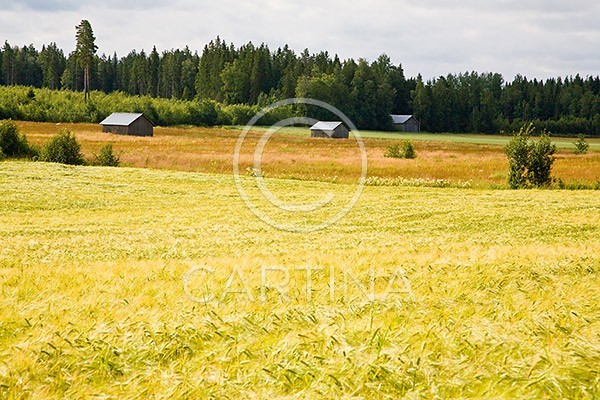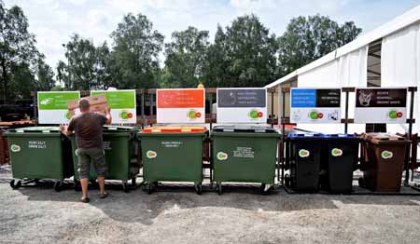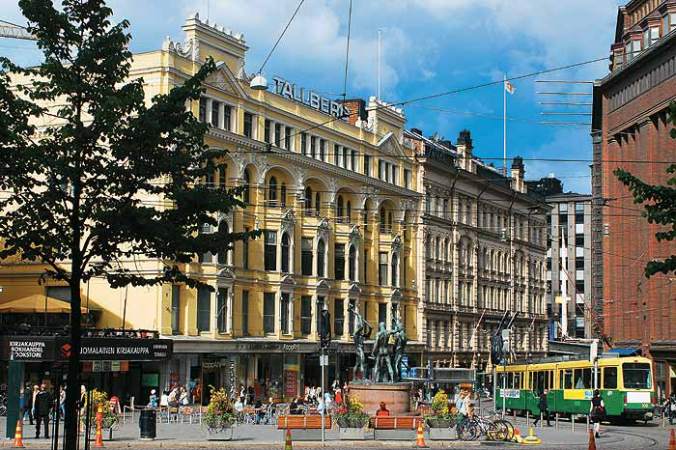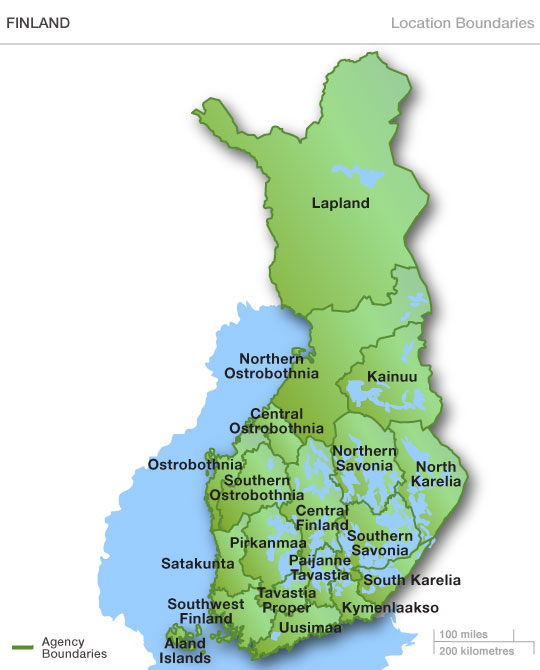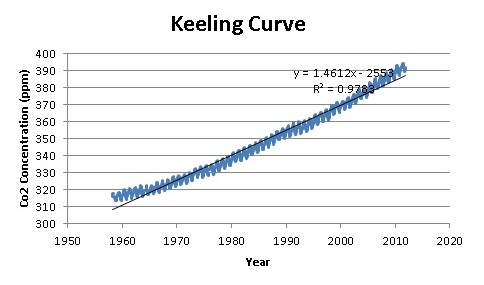So far, there have been few risk analyses concerning the impacts of climate change in Finland. In the European Environment Agency report ‘Vulnerability and adaptation to climate change in Europe’, agriculture and forestry are the only sectors for which Finland has specified some vulnerabilities.
Finland is Europe’s most heavily-forested country. Based on Boreal Forests Forests cover 23 million hectares or 74.2% of the land area. Finland had over sixteen times more forest per capita than in European countries on average. Finland’s forest policy aims at sustainable forest management based on the information I got from the unfccc. The aim is to ensure the welfare founded on the use of forests and diversity of the forest nature (Forests, trees and soil, absorb a signicant proportion of the carbon dioxide emissions). Policy measures include the Forest Act and other legislation, Finland’s National Forest Programme 2015, financing and public forestry extension organizations. Finnish forests are managed in a sustainable manner. About one third of the forests are regenerated naturally and two thirds artificially. According to the Forest Act, a new seedling stand has to be established within three years after the end of felling. Natural regeneration is based on seeding from trees already growing on the site, usually by leaving a number of seeding trees standing at the time of felling. In artificial regeneration a new stand is established on a clear-felled area, either through seeding or planting. Every year, over 160 million seedlings are planted in the forests to help to decrease the carbon dioxide emissions.
Besides forests the agriculture is also vulnerable to the changes o global climate. Climatic conditions are a decisive factor for the feasibility of crop production. Cultivation of wheat and oilseed plants is restricted to southern Finland, whereas barley, oats, grass and potato can be cultivated in most parts of the country. In many parts of Finland, livestock farming, especially dairy farming, is the only profitable agricultural production form. As a member of the EU, Finland follows the Common Agricultural Policy (CAP). The CAP is nationally implemented and aims to develop the agricultural production of the Union in a balanced way taking the environment and animal welfare into consideration. One important aim of the CAP is also to promote the vitality of rural areas.
Reading the article from the ilcc reminded me of the summer 2003 in Europe. I remember how Europe was going crazy. The warm anomalies in June lasted throughout the entire month (increases in monthly mean temperature of up to 6 to 7°C). The hot and dry conditions led to many very large wildfires, in particular in Portugal. Also many major rivers were at record low levels, resulting in disruption of inland navigation, irrigation and power-plant cooling. Even though Finland didn’t get as hot as the middle or south Europe the average monthly temperature still was higher than usual. The increase of temperature effected the agriculture the most. Berries that are huge in Finland during the summer were not available because it was too dry and hot for them to grow. It was a hard summer for Europe that is for sure.
Finland is trying to make an effort towards mitigating climate change. In recent years consumers have been increasingly opting for large diesel cars. As a result, the energy efficiency of the entire new vehicle stock has not improved. A vehicle tax amendment which entered into force in Finland in the beginning of 2008 was expected to guide consumers towards choosing more energy-efficient vehicles and this luckily worked. The market share of public transport in proportion to the total volume of passenger transport has decreased steadily since 1990, being 15 per cent in 2007 and it is predicted to keep decreasing. Besides the effort towards the public transportation Finland also uses solar and wind energy for example. Solar energy is used primarily for water heating and by the use of photovoltaics to generate electricity. In the end of 2011 wind energy share of total electricity consumption was 0.5%.
As going through the Status of Ratification of the Kyoto Protocol I noticed that Finland did not ratify the protocol, but it did add “Annex I Party to the United Nations Framework Convention on Climate Change” like does few other countries as well.
Taking part of the clonal climate change is very important for people in Finland. It is part of the culture already as well as part of the way of living. People really think mitigation is important and they try to help as much as they can.
For my opinion Finland already does pretty good job with mitigation and adapting to climate change. They are planting more trees, getting more people to use public transportations, recycling and so on. The government tries to encourage people to recycle and on this clip theres a great example of one way how they do it and below there’s a great picture of how specific the recycling is in Finland.The Finns recycle nearly everything. At townhouses there is a shed with 6 different bins. Two are for newspapers; and the others are for corrugated cardboard, light cardboard (cereal boxes, milk cartons, etc.), organic garbage, and regular garbage. By separating everything there is mostly only one small bag of regular garbage per week. Plastic bottles, glass bottles, and aluminum cans are taken to the grocery store where people are paid rather handsomely for their efforts. Outside the grocery store are bins for plastic (Styrofoam, butter containers, etc.), paper (bills, ads, etc.), glass (jam and pickle jars, etc.), and tin cans. I sometimes got annoyed how you always have to separate everything but I understand the value of it. It might be a little more time consuming but at the end it pays off. One thing that Finland has been doing a long time and it actually was one of the first countries to take it into use is that you have to pay for plastic bags in grocery stores. Because of this people bring their own grocery bags to stores ore reuse most of the bags as trash bags.
At school they educate the students from early age about global climate change and how they can help prevent it. I remember how all the way from first grade and even before that we would always go through how to recycle and would have days that we would use to clean up the surrounding areas. Of course there is always room for improvement but I am sure Finland will keep up with this and try to mitigate and adapt to climate change even more.
On this website there is some more information about Finland and if you have any extra time or are interested you can check it out.
Thank you for reading my blog and for the great comments. Have a great summer break everyone!! 🙂

